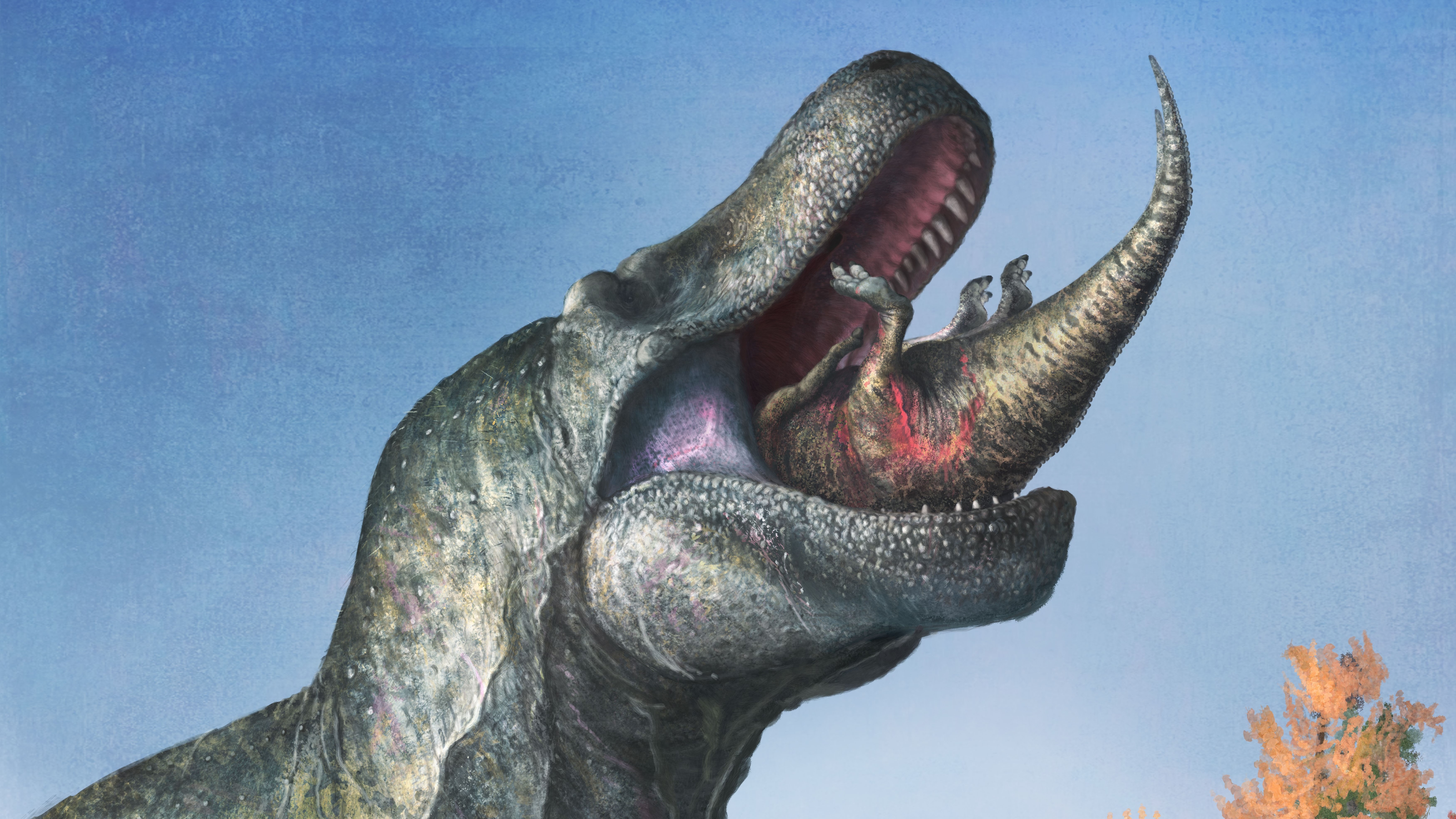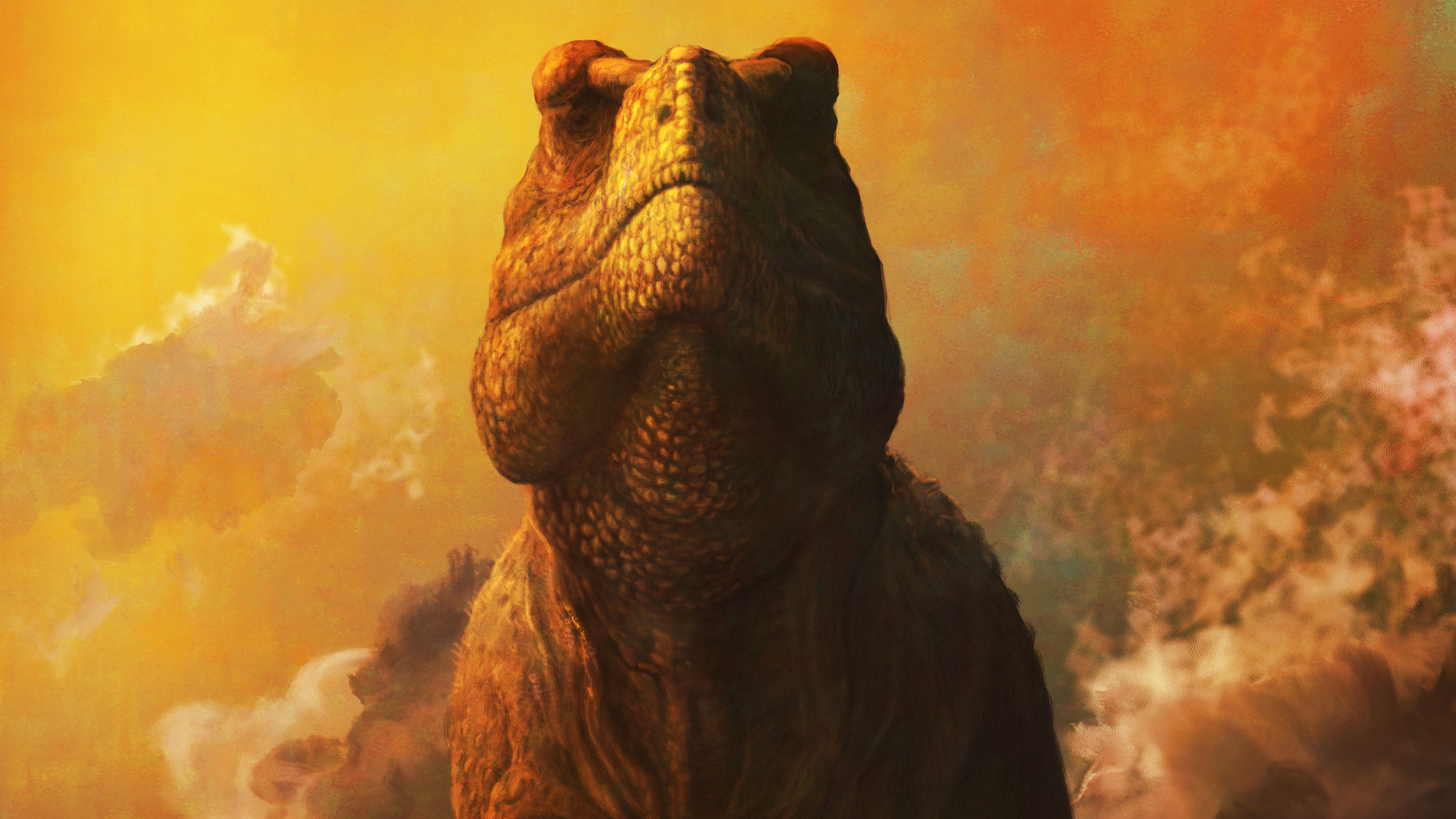
Popular depictions of the superpredator Tyrannosaurus rex snarling to display its gigantic, knifelike teeth are scientifically inaccurate, new research suggests.
Theropod dinosaurs — a group of bipedal, mostly meat-eating dinosaurs that included T. rex, Velociraptor and Spinosaurus — may instead have concealed their deadly chompers behind thin lips that kept their teeth hydrated and tough enough to crush bones.
Paleontologists had already suggested that T. rex may have had lips, and there has been debate whether carnivorous dinosaurs looked more like present-day crocodiles, which don’t have lips and have protruding teeth, or if they more likely resembled monitor lizards, whose large teeth are covered by scaly lips.
"Dinosaur lips would be more similar to those of many lizards or amphibians," Thomas Cullen, a paleobiologist at Auburn University in Alabama, and lead author of the new study, told Live Science in an email. "It would be a covering of skin and scales extending from the edge of the jaw enough to cover the side view of the teeth somewhat, and allow the mouth to close with a tight seal that prevents the teeth from being exposed."
Teeth need to be hydrated to stay sturdy and healthy, co-author Mark Witton, a paleontologist, paleoartist and visiting researcher at the University of Portsmouth in England, told Live Science. "Crocodiles and alligators — their teeth are always breaking because they're not as strong, because they're not kept hydrated."
Related: T. rex could have been 70% bigger than fossils suggest, new study shows
Theropod dinosaurs probably didn't have muscles to pull back these flaps of skin into a snarl or toothy grin in the way that filmmakers portrayed them in the "Jurassic Park" movies. Instead, the beasts had a less threatening, gummy smile, according to the study published Thursday (March 30) in the journal Science.
The team dissected an upper tooth from a fossilized Daspletosaurus, a tyrannosaur that was a close relative of T. rex but slightly smaller, according to the Australian Museum. Dinosaurs continually replaced their teeth, so the researchers selected a relatively mature, 500-day-old tooth to assess its level of wear and determine if it was exposed or protected by lips.
The tooth was "pristine," Witton said. "The enamel and everything was as fresh as the day it was baked, so to speak. That's a really good indication that that tooth was well looked after in a hydrated environment."
The researchers then investigated if a pair of lips could actually cover the gigantic teeth of carnivorous dinosaurs like T. rex. They compared tooth crown height with jaw length in tyrannosaurs and monitor lizards, which have large teeth relative to their skull that are covered with lips. They found that the proportions were similar in both groups and it was therefore plausible that some dinosaurs could have had lips.

However, just how big theropod lips were — and whether they had lips at all — continues to divide experts.
"There has been much debate on this issue of tyrannosaur lips over the last few years, and I think this study makes a good case," Steve Brusatte, a paleontologist at the University of Edinburgh in Scotland who was not involved in the study, told Live Science in an email. "I suspect [the authors] are right, and that tyrannosaurs had more soft tissue covering their teeth than crocodiles, but I'm still on the fence as to whether they had as much stuff covering their teeth as monitor lizards."
Some paleontologists remain convinced that theropod dinosaurs sported the lipless look that their crocodile descendants have today. "The authors make claims about tyrannosaur teeth that don't map onto the fossils I've seen," Thomas Carr, an associate professor at Carthage College in Wisconsin, and lead author of a 2017 study on tyrannosaur lips published in the journal Scientific Reports, told Live Science in an email.
In the study, Carr found that wrinkles on tyrannosaur skulls, which are printed onto the bone by their scales, are identical to those of crocodiles and do not extend beyond the jawline. This suggests that "tyrannosaurs had the lipless appearance of crocodylians," Carr said.
"The only resolution for this impasse will have to come from the fossil record," he added.
The authors of the new study acknowledged the need for further research.







